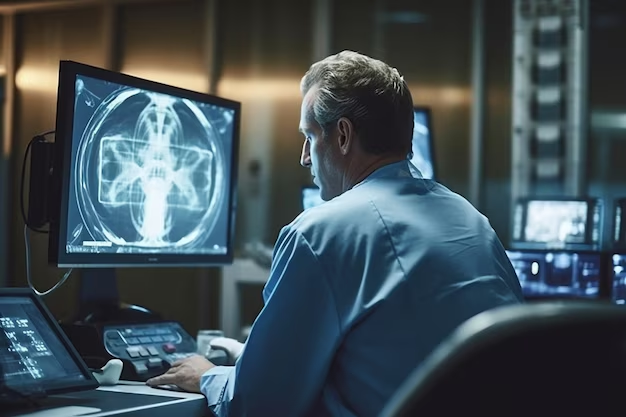What Is aPET-CT (Positron Emission Tomography) ?
PET-CT (Positron Emission Tomography) is a type of nuclear medicine imaging which combines the images from a PET scan and a CT scan to display anatomy and metabolic function of the organs.PET-CT is used for early detection of abnormal metabolism and tumours. PET-Ct (Positron Emission Tomography) is an advanced technology that provides patients with better cancer care. This diagnostic imaging procedure can scan the whole body in a single exam to detect cancer cells.
PET/CT is used to diagnose various diseases, and performed to
- Cancers: diagnosing, staging, evaluating, status of reoccurrence and treatment response
- Determine if the cancer has spread in the body
- Determine if the cancer has returned after the treatment.
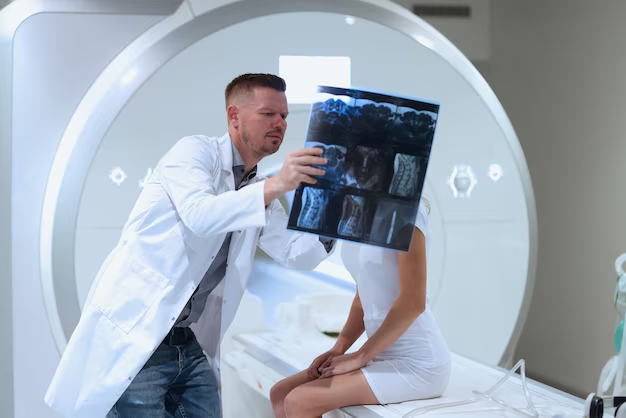
- Detection of cancer metastases in bones
- Heart disease: Coronary heart disease and damaged heart muscles
- Brain disorders: tumors, memory disorders, seizures, central nervous system
PET-CT scanning performs by injecting a small amount radioactive substancescalled radiotracers into a vein and process can take about an hour. Radioactive substances remains a short period of time in the body before being eliminated in the urine or stool, usually within 24 hours. The amount of radiation from a nuclear medicine imaging procedure is comparable to a X-ray scanning. Device is open so does not cause you feel claustrophobic.
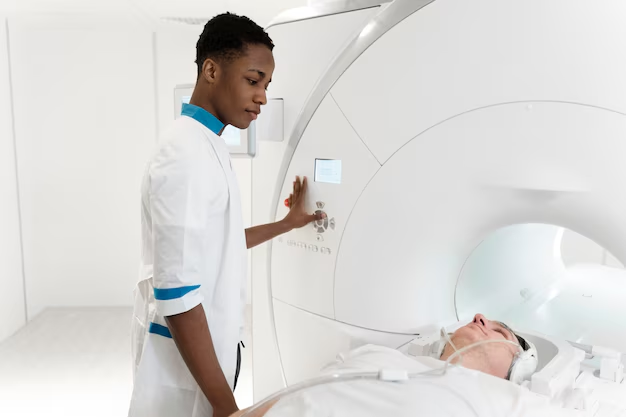
What are the advantages of PET-CT?
Doctors perform PET and PET/CT scans to:
- detect cancer and/or make a diagnosis.
- determine whether a cancer has spread in the body.
- assess the effectiveness of treatment.
- determine if a cancer has returned after treatment.
- evaluate prognosis.
- assess tissue metabolism and viability.
- determine the effects of a heart attack myocardial infarction on areas of the heart.
- identify areas of the heart muscle that would benefit from angioplasty or coronary artery bypass surgery (in combination with a myocardial perfusion scan).
- evaluate brain abnormalities, such as tumors, memory disorders, seizures and other central nervous system disorders.
- map normal human brain and heart function.
What is PET/CT scanning?
Positron emission tomography, also called PET imaging or a PET scan, is a type of nuclear medicine imaging.
Nuclear medicine uses small amounts of radioactive material called radiotracers. Doctors use nuclear medicine to diagnose, evaluate, and treat various diseases. These include cancer, heart disease, gastrointestinal, endocrine, or neurological disorders, and other conditions. Nuclear medicine exams pinpoint molecular activity. This gives them the potential to find disease in its earliest stages. They can also show whether you are responding to treatment.
Nuclear medicine is noninvasive. Except for intravenous injections, it is usually painless. These tests use radioactive materials called radiopharmaceuticals or radiotracers to help diagnose and assess medical conditions.

Radiotracers are molecules linked to, or “labeled” with, a small amount of radioactive material. They accumulate in tumors or regions of inflammation. They can also bind to specific proteins in the body. The most common radiotracer is F-18 fluorodeoxyglucose (FDG), a molecule similar to glucose. Cancer cells are more metabolically active and may absorb glucose at a higher rate. This higher rate can be seen on PET scans. This allows your doctor to detect disease before it may be seen on other imaging tests. FDG is just one of many radiotracers in use or in development.
You will usually receive the radiotracer in an injection. Or you may swallow it or inhale it as a gas, depending on the exam. It accumulates in the area under examination. A special camera detects gamma ray emissions from the radiotracer. The camera and a computer produce pictures and supply molecular information.
Many imaging centers combine nuclear medicine images with computed tomography (CT) or magnetic resonance imaging (MRI) to produce special views. Doctors call this image fusion or co-registration. Image fusion allows the doctor to connect and interpret information from two different exams on one image. This leads to more precise information and a more exact diagnosis. Single photon emission CT/CT (SPECT/CT) and positron emission tomography/CT (PET/CT) units can perform both exams at the same time. PET/MRI is an emerging imaging technology. It is not currently available everywhere.
A PET scan measures important body functions, such as metabolism. It helps doctors evaluate how well organs and tissues are functioning.
CT imaging uses special x-ray equipment, and in some cases a contrast material, to produce multiple images of the inside of the body. A radiologist views and interprets these images on a computer monitor. CT imaging provides excellent anatomic information.
Combined PET/CT scanners perform almost all PET scans today. These combined scans help pinpoint abnormal metabolic activity and may provide more accurate diagnoses than the two scans performed separately.

How should I prepare for a PET and PET/CT scan?
You may wear a gown during the exam or be allowed to wear your own clothing.
Women should always tell their doctor and technologist if they are pregnant or breastfeeding. See the Radiation Safety page for more information about pregnancy and breastfeeding related to nuclear medicine imaging.
Tell the doctor and your exam technologist about any medications you are taking, including vitamins and herbal supplements. List any allergies, recent illnesses, and other medical conditions.
You will receive specific instructions based on the type of your PET scan. Diabetic patients will receive special instructions to prepare for this exam.
Leave metal objects including jewelry, eyeglasses, dentures and hairpins at home as they may affect the CT images. You may need to remove hearing aids and removable dental work.
Generally, your doctor will tell you not to eat anything for several hours before a whole body PET/CT scan. Eating may alter the distribution of the PET tracer in your body and can lead to a suboptimal scan. This could require you to repeat the scan on another day, so following instructions regarding eating is very important. You should not drink any liquids containing sugars or calories for several hours before the scan. Instead, you are encouraged to drink water. If you are diabetic, your doctor may give you special instructions. Tell your doctor about all the medications you are taking. List any allergies, especially to contrast materials or iodine.
Your doctor will check for any conditions you may have that could increase the risk of receiving intravenous contrast material.
What does the equipment look like?
A PET scanner is a large machine with a round, donut-shaped hole in the middle. It looks like a CT or MRI unit. Multiple rings of detectors inside the machine record the energy emissions from the radiotracer in your body.
The CT scanner is typically a large, donut-shaped machine with a short tunnel in the center. You will lie on a narrow table that slides in and out of this short tunnel. Rotating around you, the x-ray tube and electronic x-ray detectors are located opposite each other in a ring, called a gantry. The computer workstation that processes the imaging information is in a separate control room. This is where the technologist operates the scanner and monitors your exam in direct visual contact. The technologist will be able to hear and talk to you using a speaker and microphone.
Combined PET/CT scanners look similar to both the PET and CT scanners.
A computer creates the images using the data from the gamma camera.
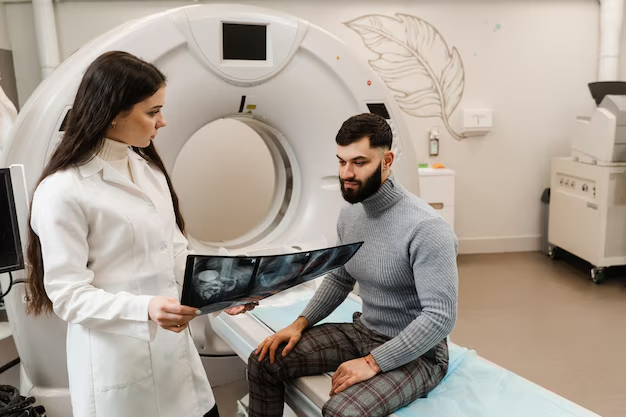

How does the procedure work?
Ordinary x-ray exams pass x-rays through the body to create an image. Nuclear medicine uses radioactive materials called radiopharmaceuticals or radiotracers. Your doctor typically injects this material into your bloodstream. Or you may swallow it or inhale it as a gas. The material accumulates in the area under examination, where it gives off gamma rays. Special cameras detect this energy and, with the help of a computer, create pictures that detail how your organs and tissues look and function.
PET scans only use radiotracer injections.
Unlike other imaging techniques, nuclear medicine focuses on processes within the body. These include rates of metabolism or levels of various other chemical activities. Areas of greater intensity are called “hot spots.” These may show large concentrations of the radiotracer and where there is a high level of chemical or metabolic activity. Less intense areas, or “cold spots,” indicate a smaller concentration of radiotracer and less activity.
What will I experience during and after the procedure?
Except for intravenous injections, most nuclear medicine procedures are painless. Reports of significant discomfort or side effects are rare.
You will feel a slight pin prick when the technologist inserts the needle into your vein for the intravenous line. You may feel a cold sensation moving up your arm during the radiotracer injection. Generally, there are no other side effects.
PET scans only use radiotracer injections.
With some procedures, the technologist may place a catheter into your bladder. This may cause temporary discomfort.
It is important to remain still during the exam. Nuclear imaging causes no pain. However, having to remain still or in one position for long periods may cause discomfort.
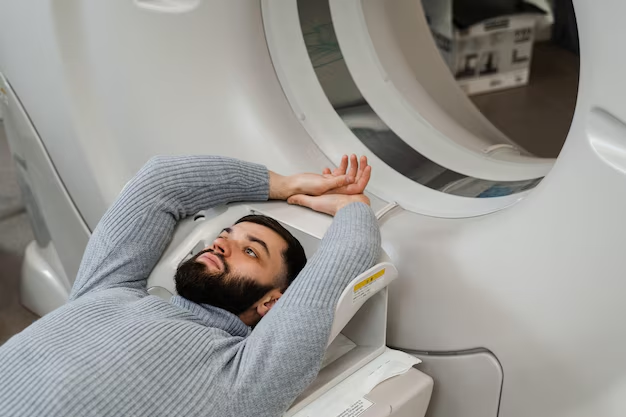
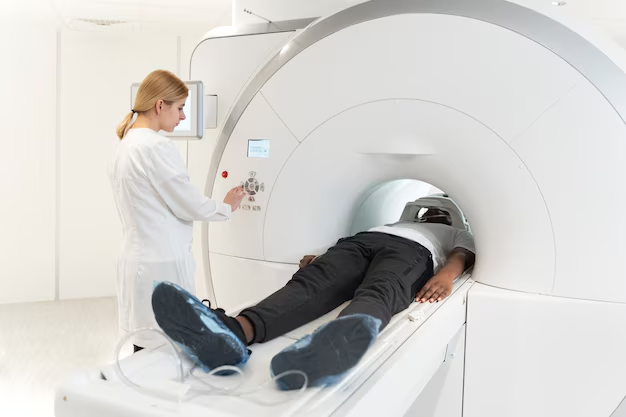
What are the benefits vs. risks?
Benefits
- Nuclear medicine exams provide unique information that is often unattainable using other imaging procedures. This information may include details on the function and anatomy of body structures.
- Nuclear medicine supplies the most useful diagnostic or treatment information for many diseases.
- A nuclear medicine scan is less expensive and may yield more precise information than exploratory surgery.
- By identifying changes in the body at the cellular level, PET imaging may detect the early onset of disease before it is evident on other imaging tests such as CT or MRI.
The benefits of a combined PET/CT scan include:
- greater detail with a higher level of accuracy; because both scans are performed at the same time without the patient having to change positions, there is less room for error.
- greater convenience for the patient who undergoes CT and PET at one time rather than two different times.
What are the benefits vs. risks?
Risks
- Because nuclear medicine exams use only a small dose of radiotracer, they have a relatively low radiation exposure. This is acceptable for diagnostic exams. Thus, the potential benefits of an exam outweigh the very low radiation risk.
- Doctors have been using nuclear medicine diagnostic procedures for more than six decades. There are no known long-term adverse effects from such low-dose exposure.
- Your doctor always weighs the benefits of nuclear medicine treatment against any risks. Your doctor will discuss the significant risks prior to treatment and give you an opportunity to ask questions.
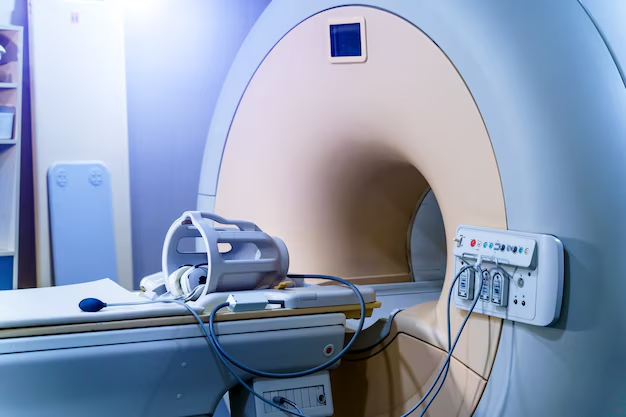
- Allergic reactions to radiotracers are extremely rare and usually mild. Always tell the nuclear medicine personnel about any allergies you may have. Describe any problems you may have had during previous nuclear medicine exams.
- The radiotracer injection may cause slight pain and redness. This should rapidly resolve.
- Women should always tell their doctor and radiology technologist if there is any possibility that they are pregnant, or they are breastfeeding. See the Radiation Safety page for more information about pregnancy, breastfeeding and nuclear medicine exams.
What are the limitations of PET/CT?
Nuclear medicine procedures can be time consuming. It can take several hours to days for the radiotracer to accumulate in the area of interest. Plus, imaging may take up to several hours to perform. In some cases, newer equipment can substantially shorten the procedure time.
The image resolution of nuclear medicine images may not be as high as that of CT or MRI. However, nuclear medicine scans are more sensitive for a variety of indications. The functional information they yield is often unobtainable using other imaging techniques.
Altered blood sugar or blood insulin levels may adversely affect the test results of diabetic patients or patients who have eaten a few hours prior to the exam.
The radiotracer decays quickly and is effective for only a short time. Therefore, it is important for you to be on time for your appointment and to receive the radioactive material at the scheduled time. Late arrival for an appointment may require you to reschedule the procedure.
A very obese person may not fit into the opening of a conventional PET/CT unit.


